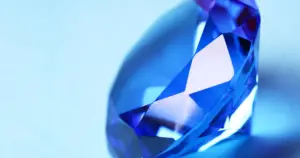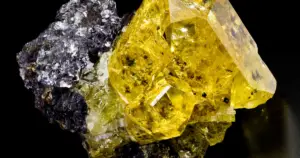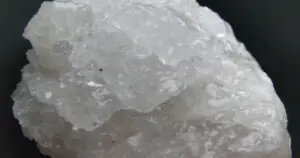Lapis Lazuli Meaning: Healing Properties, Benefits and Uses
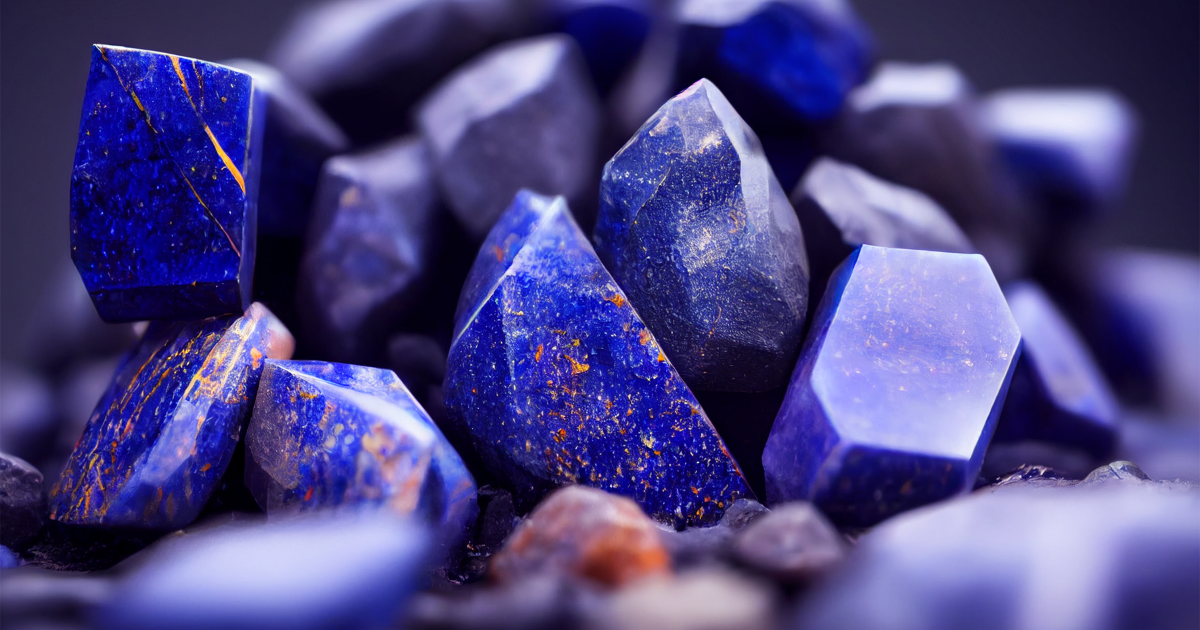
Lapis Lazuli is a blue metamorphic rock, also known as “lapis.” For thousands of years, mankind has utilised lapis lazuli as a gemstone, carving material, and decorative material.
Table of Contents
What is Lapis Lazuli?
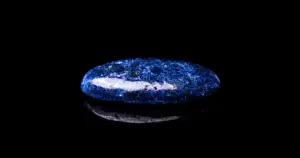
One of the oldest opaque gemstones in history, lapis lazuli dates back more than 6,500 years. This deep blue stone has tiny mica specks all around it that are like stars in the night sky. The vividly blue stone lapis lazuli is created from the minerals deep blue lazurite, foggy white calcite, glittering pyrite, and many other minerals.
Lapis lazuli’s distinctive appearance is due to this exquisite combination of textures. Lazurite, a sodalite group blue silicate mineral, is the primary source of the lapis lazuli’s blue colour. The Mohs hardness of lapis is around 5.
How to identify a Lapis Lazuli?

The most well-known application of lapis lazuli is as a gemstone. It is a material that is frequently used to make cabochons and beads. Additionally, it is frequently used as a medium for miniature sculptures and inlay or mosaic projects. Lapis is the most widely used opaque blue gemstone as a result of these uses.
Where is Lapis Lazuli Found?
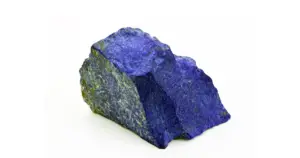
Lapis Lazuli’s most well-known source is hidden deep in Afghanistan’s contemporary highlands. Pakistani and Afghanistan stones are still regarded as having the highest grade. In addition to the USA, Canada, and Chile, lapis lazuli can also be found in less vivid blue varieties. An elite deep blue type is also produced in Argentina.
Lapis Lazuli Stone Meaning

The Latin term lapis, which means “stone,” and the Persian word lazhuward, which means “blue,” are the two halves of the stone’s two-part name. It is a rock that contains several minerals, including lazurite, diopside, calcite, pyrite, and others; it is neither an element nor a mineral.
Lapis Lazuli Meaning in Ancient Lore and History
The therapeutic qualities of lapis lazuli are well known. Both royal families and mystics have traditionally loved it. The user gains several advantages from this stone since it has a connection to knowledge and a calming vibe. Only when a person is prepared to absorb its benefits and when it is worn for a long time can one feel its advantage. It is thought to insulate the bearer from any harmful effects and protect them from negative energy.
Lapis Lazuli Healing Properties
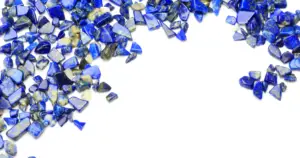
Numerous health advantages of lapis lazuli exist. It strengthens the immune system, brings down blood pressure, cleanses the blood, and reduces any inflammation that may be present in the body.
Additionally, it is supposed to help with issues with the thyroid and throat. The good part of it is, it helps treat insomnia and depression. The respiratory and neurological systems gain from it. It helps clean the organs and bone marrow and is suitable for the nervous, throat, larynx, and respiratory systems in addition to relieving migraine discomfort.
Disorders of the spleen, heart, autism, depression, virility, pain, epilepsy, eye and virility can all be effectively treated with it. Additionally, it is thought to be beneficial for RNA/DNA damage and tuberculosis.
Lapis Lazuli Metaphysical Properties

While the ancient Egyptians interpreted it as a representation of the night sky, the Sumerians thought that the stone contained the essence of their gods. Lapis lazuli has been linked to power and bravery, monarchy and knowledge, intelligence and truth since the dawn of time.
Lapis lazuli has been worn for centuries in the hope that it will fend against evil. It was powdered and placed over the eyes in ancient Egypt to enhance vision. Some people now believe it to be helpful for regulating the brow chakra (which influences vision and hearing). Headaches, anxiety, and skin issues are allegedly brought on by brow chakra imbalances.
Lapis Lazuli Benefits

Lapis lazuli helps the larynx, vocal chords, and throat when it comes to physical recovery. This blue gemstone is used by some individuals to treat sleeplessness, control blood flow, and assist the menstrual cycle.
Ailments related to eyesight and sight can also be treated with lapis lazuli. Warm, sterile water infused with the lapis stone works well as an eye wash to treat eye infections or sties.
Additionally, this stone is beneficial on an emotional and spiritual level. People who struggle with self-expression might benefit from wearing this blue gemstone and become more outspoken about their demands because the significance of lapis lazuli is so entwined with the gift of truth. Read here if you want to know about the negative effects of Lapis Lazuli.
Lapis Lazuli Benefits Spirituality

One gets cleansed of lesser energies and brought into alignment with higher powers and vibrations by lapis lazuli. Its energies assist a person in becoming more conscious of his or her inner self. The use of its relaxing qualities is advantageous in both the home and the workplace. It frees oneself from restrictions and issues they have placed on themselves.
Numerous chakras are opened, and inner truth, good magic, cleansing, and love are brought into people’s lives. It is worn to provide protection from mental assaults, relieve tension, and promote profound tranquilly. It is supposed to improve one’s creativity, objectivity, and clarity. Additionally, it fosters relationships and supports the expression of feelings and emotions.
Lapis Lazuli & Feng Shui
Water, which symbolises tranquilly, calmness, and purity, is the element that lapis lazuli represents. One can promote peaceful thought or prayer by placing the lapis lazuli stone in the North-facing areas of the home or workplace.
Lapis Lazuli Chakras
Lapis lazuli is connected to the third eye chakra and the throat chakra, two chakras. These chakras, which relate to aspects of self-expression and spiritual connection, are both symbolised by blue and purple hues.
For people with weak throat chakras, lapis lazuli is the best remedy. Lapis lazuli’s deeper blue tones stand for the gift of truth and expression, giving harmony to the throat chakras and supporting positive self-expression.
What are the Uses of Lapis Lazuli?
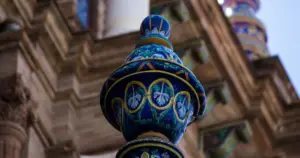
The benefits of lapis lazuli are best utilised when the stone is incorporated into regular everyday activities. By keeping your lapis lazuli crystal near your body or in your hand as you meditate, you may have a calming and attentive experience.
Wearing a lapis lazuli stone as jewellery on your body is the greatest way to display it. You may get stunning lapis stone earrings, necklaces, or bracelets that will make you feel good all day.
Mineral pigments made from top-quality lapis lazuli have been used for over a thousand years. After being cleaned of contaminants and crushed into a fine powder, lapis stones that are bright blue can be combined with oil or another such compound and used as a paint. There have been numerous examples of it being utilized in paintings and architecture.
Caring for Lapis Lazuli
The Mohs Hardness Scale places lapis lazuli in the centre, making it both tougher and softer than many clear-faceted gems while also being harder than a variety of other famous stones. Pressure, heat, common home cleansers, and abrasives may all damage lapis. Lapis lazuli should not be exposed to sunlight for extended periods of time since the sun can degrade the stone’s hue.
Lapis lazuli may be put in water, however, because of its porous nature, it is not advised to do so for long periods of time. Undyed lapis should be cleaned in lukewarm, soapy water; before washing, try dyed materials to see how they respond to water. After cleaning them with a gentle cloth, put them dry in a different bag or box where it is safely placed so it does not get scratched nor does it affect other stones. The use of ultrasound and stream cleaners is not recommended.
How to Recharge Your Lapis Lazuli?

You can smudge sage, bathe in full moonlight, or put your stone in a basin of hematite crystals to absorb old, stagnant energy when it comes to energetic charge. Regardless of how you choose to cleanse your crystals, always make sure to do it with a good purpose to speed up the recharging process.
How much is Lapis Lazuli worth?
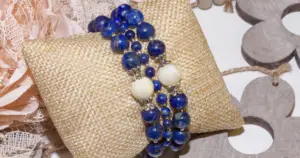
Currently, a low-grade lapis stone may be purchased for about $1 per carat, while more expensive examples can cost between $100 and $150 per carat.
Deeply cobalt-colored lapis stones with vivid gold flecks are more uncommon and hence more expensive. While the paler-hued stones with white specks are more widespread and less expensive.
What determines Lapis Lazuli’s price and value?
Due to its vivid blue hue, this gemstone has been coveted and utilised for inlay and intarsia as well as pigments in cosmetics and artwork. Its visual appeal and contrast are enticing. Today, jewellery making is the main use.
Does lapis lazuli make a good jewelry stone?
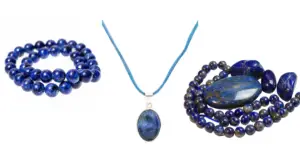
Lapis lazuli’s applicability for particular purposes is constrained by some durability issues. Lapis has an approximate Mohs hardness of 5, making it incredibly soft to use in jewellery such as rings, cufflinks, or bracelets, especially if the stone’s top is elevated over the top of the setting or bezel. Lapis used for these purposes will eventually begin to exhibit symptoms of abrasion.
Since abrasion is less prone to happen in earrings, pins, and pendants, Lapis is best utilised in these items. Lapis can sustain damage whether kept in jewellery or as unmounted stones if the components are not kept apart. It is recommended to keep jewellery in individual boxes, bags, or trays with divisions for each piece. Store loose-cut stones in a safe place where they do not rub or abrade one another.
Lapis Lazuli Real vs Fake
Before lapis lazuli is marketed as finished gemstones, sculptures, or decorations, it is typically treated after it has been cut. Due to its small porosity, lapis lazuli may absorb and hold colour. To make white calcite less visible, a large portion of the material that enters the market has been dyed blue. After that, it is commonly coated with wax or oil to preserve the coloured calcite and enhance the sheen of polished surfaces.
Real lapis lazuli is more matte and has a deeper colour than fake lapis stones, which tend to be glassier and more reflective. Make sure your stone has distinctive gold specks made of calcite because some fake lapis stones won’t. Real lapis is solid, hefty and appears to have magical shine and in intensity when seen under natural light.
